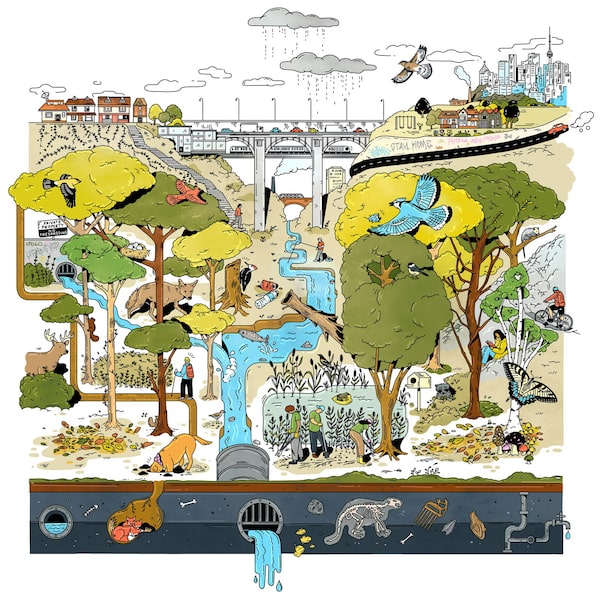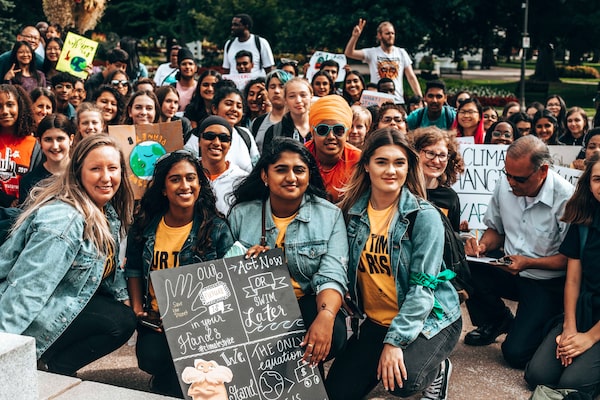If you’re reading this on the web or someone forwarded this e-mail newsletter to you, you can sign up for Globe Climate and all Globe newsletters here.
Good afternoon, and welcome to Globe Climate, a newsletter about climate change, environment and resources in Canada.
Today’s federal budget is test of talk versus action on climate for the Liberals.
Over the last year, Finance Minister Chrystia Freeland has talked a lot about how the restart of the economy needs to be green – as well as equitable and inclusive. But what those three words mean for spending will now come into shape as the government delivers its first budget in two years. The expectations couldn’t be higher.
The case for green spending has been bolstered by competitive pressure as U.S. President Joe Biden has spent his early months in office aggressively trying to establish the U.S. as a leader in sustainable-economy transition. Fittingly, he will host an international climate summit three days after the budget’s release.
As you read this newsletter, Globe reporters and columnists are poring over the budget documents, so be sure to check back after 4 p.m. ET. In the meantime, here is some suggested reading:
- Adam Radwanski has what to watch for in this make-or-break moment for the Liberals to put Canada on a path to net-zero
- Emma Graney: Alberta, Ottawa launch carbon capture group
- Matthew McClearn: Ottawa holds back on new funding for small nuclear reactors. Meanwhile, Mark Rendell asks: Will the Liberals seize the moment of Industrial policy?
Want to be part of the budget conversation? The Narwhal is hosting a chat today at 6 p.m. ET. Tune in for a breakdown of the key takeaways.
Now, let’s catch you up on other news.
Noteworthy reporting this week:
- Canada’s first hydrogen hub launched last week just outside Edmonton. Now, ‘the race is on’ as the hub presents a unique opportunity, given the co-operation between local, provincial and federal governments and First Nations, and the vast reserves of natural gas feedstock required to produce blue hydrogen. The Narwhal writes that this technology is also breathing hope into Alberta’s industrial heartland.
- The Conservatives unveiled a loyalty-card style of carbon pricing, where Canadians will pay into a personal low-carbon savings accounts each time a hydrocarbon-based fuel is purchased. (Scroll down to read more opinion and analysis on this!)
A deeper dive
This is your brain on trees
Green space helps people feel less depressed and fatigued, and science is still exploring all the other ways it lifts our spirits. In a global crisis, a little more nature might be key to getting through to the other side.
Maybe this is why humans often seek out nature more earnestly in times of crisis. But it’s more than a place to exercise and socialize. There’s something about how out brains interact with nature that yields psychological benefits.
Scientists are still untangling how this works. One idea is that natural landscapes activate a part of the brain that reduces stress. Another is that nature could help restore attention. Even just seeing nature through a window has shown to boost well-being. People who see trees, flowers and grass recover from surgery faster (and take fewer narcotic painkillers), than those with views of brick or concrete.
It’s part of healthcare professionals and policy makers are looking for ways to develop health interventions that incorporate nature. It’s why columnist Marcus Gee asks to keep the magic and the mystery of Toronto’s ravines.
A ravine-land who’s who
Take a virtual hike through our urban ecosystems and the threats they face from humans. What we imagine is unspoiled wilderness is being constantly changed by urbanization, non-native species and pollution. Below, a naturalist and an illustrator show you what to look for.

Illustration by Kathleen Fu
What else you missed
- Infrastructure Minister Catherine McKenna has announced a $1.5-billion program designed to spur green building through retrofits, upgrades and new construction of public institutions.
- Alberta cabinet ministers are defending the government’s widely criticized plans to consult the public over open-pit coal development in the province’s Rocky Mountains.
- Two federal ministers have written to Saskatchewan Premier Scott Moe protesting his plan to bring in in a $150 yearly tax on electric vehicles.
- Researchers unveiled the first calculation of the total Tyrannosaurus rex population during the estimated 2.4 million years that they inhabited western North America. Estimates show there may have been 2.5 billion the school bus-sized meat-eating dinosaur.
Opinion and analysis
Campbell Clark: Conservatives’ new carbon plan would provide incentives to burn more fuel
Editorial board: The Conservatives just had a carbon-price epiphany. Good for them. Good for Canada
Adam Radwanski: Get past its baffling carbon-price proposal, and O’Toole’s climate plan is a step forward
Kelly Cryderman: Erin O’Toole released a Conservative climate plan, now he has to convince supporters
Green Investing
ESG investments may not be the ‘crowded trade’ some have feared
Jeffrey Jones: “The ESG world and investments therein are maturing, however. That will be reflected in the long-term prospects, as regulators mandate companies to disclose key data on emissions and social issues in standardized forms in jurisdictions around the world. Meanwhile, major institutional investors, including BlackRock Inc., are applying pressure on companies in their portfolios to address the risks to profitability of climate change, and policies to deal with it.”
- Join us Tuesday April 20 to learn more about climate risks & opportunities for business leaders and investors
Making waves
Each week The Globe will profile a Canadian making a difference. This week we’re highlighting the work of all the young people creating climate solutions with Youth Challenge International.

YCI & Evergreen from Community Climate CouncilHandout
For over 30 years, Youth Challenge International (YCI) has partnered with young people in Canada and around the world to create inclusive, collaborative solutions that tackle critical global issues, including gender equality and climate change, to drive positive social impact for youth and their communities.
Since 2019, YCI’s Climate Action Network programs have supported over 200 young people in the Greater Toronto and Hamilton Area (GTHA) to build leadership skills and design and implement more than 60 youth-led climate action projects. These projects tackle local climate issues such as Miranda Baksh’s team’s Community Climate Council. Through YCI’s programs, she co-founded the non-profit organization to provide a space for local climate action through enhancing climate literacy and political advocacy in GTHA’s Peel Region.
Join YCI’s exclusive programs to grow leadership skills, build your network and take climate action in your community today at youthclimateaction.ca.
Do you know an engaged individual? Someone who represents the real engines pursuing change in the country? Email us at GlobeClimate@globeandmail.com to tell us about them.
Photo of the week

In this image released by World Press Photo, Thursday April 15, 2021, by Ciril Jazbec for National Geographic, titled One Way to Fight Climate Change: Make Your Own Glaciers, which won the second prize in the Environment Stories category, shows the youth group that built this ice stupa in the village of Gya installed a café in its base in India, March 19, 2019.Ciril Jazbec for National Geographic/The Associated Press
Catch up on Globe Climate
- For Canadian companies, ‘net zero’ is an ambition in need of a definition
- Standing at the intersection of a global pandemic and environmental racism
- Can you be a capitalist and save the world at the same time?
- Environmental work is for all ages
We want to hear from you. Email us: GlobeClimate@globeandmail.com. Do you know someone who needs this newsletter? Send them to our Newsletters page.
 Sierra Bein
Sierra Bein